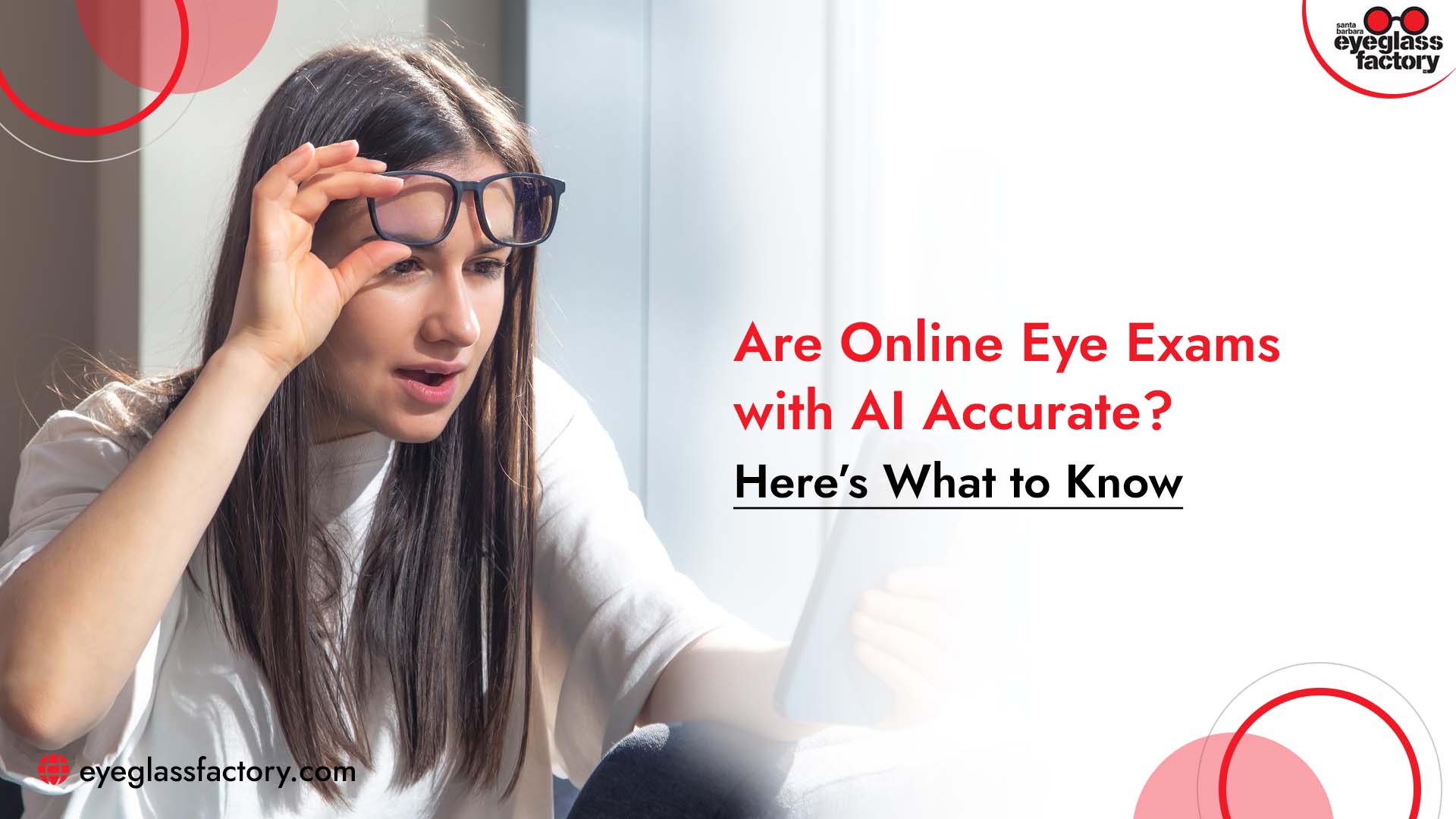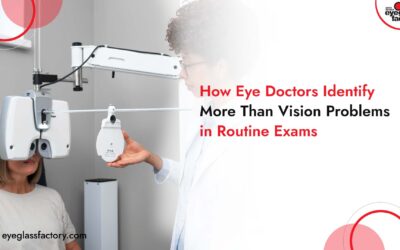The healthcare industry has been revolutionized through technology, and eye care is no exception. During the rise of AI-based online eye exams, patients now have access to convenient tools that promise faster results, lower prices, and both the test and follow-ups at home. But just what is their accuracy compared with personally visiting an optometrist in your area, or will they be able to replace traditional techniques altogether? Maybe they could serve as an accessory instead.
In this guide, we explore both what an AI-driven online exam is but also its advantages and disadvantages. Its reliability when compared to a traditional free eye exam with an optometrist is one issue that requires examination.
What Are AI-Based Online Eye Exams?
AI-based online eye exams use algorithms and machine learning. Together, they can analyze your vision and pick up problems you might have. You will be asked by most platforms to carry out a digital eye vision test on your computer screen or smartphone, where letters are read, images tracked with your eyes, or you react to visual cues.
The software then analyzes your results to give insight into the condition of your eyesight – sometimes even updating words you can use on your glasses or contacts. Some services make this type of service possible with support from real-life eye doctors, everyone named and licensed by their government, while others depend entirely on artificial intelligence to generate displays themselves for the patient.
Benefits of AI-Based Online Eye Exams
- Convenience: It proves unnecessary for you to travel and saves time away from home
- Accessibility: Useful for those in remote areas or unable to visit clinics.
- Cost-Effective: Many online tools are less expensive than traditional tests, and some have a limited free eye examination feature.
- Speed: Within minutes, it gives off results.
- Monitoring: The perfect way to spot changes in daylight vision between full optometrist visits.
For example, a person’s eye exam in Santa Barbara, CA, who faced scheduling conflicts might use AI-based tools in the short term as a temporary measure to wait until they get to a local optometrist’s office.
Limitations and Concerns
Despite their potential, AI-based examinations have clear faults of their own:
- Narrow Scope: It can detect that visual sharpness is declining, but it is not capable of diagnosing serious eye conditions such as glaucoma, cataracts, or macular degeneration.
- Inaccuracy: Results may differ depending on the device you use, the light conditions at your location, and errors you make during the testing phase.
- Lack of Personal Interaction: You are losing out on the skills that an optometrist has in picking up subtle danger signs.
- Not FDA-Approved as a Substitute: Many platforms are currently under review and have not yet been given any regulation by the government to take the place of personal examinations in person.
That means although they are useful, they are not a substitute for a full eye vision test carried out in a hospital.
How Accurate Are They Compared to Traditional Exams?
AI-based online eye exams can give you a reasonably accurate baseline for how strong your glasses should be and monitor vision changes over time, but they are not as precise or complete as a full test administered by an optometrist.
The list of procedures in a traditional exam goes much further. Pupil dilation, retinal images, and intraocular pressure checks are used to identify early warning signs for any number of potentially dangerous diseases. There is no way this can be carried out online.
Think of online exams as a preliminary check rather than a substitute. They can let you know whether you need to book an eye exam in Santa Barbara, CA, with a professional, but only to a certain extent.
Who Should (and Shouldn’t) Use Them?
AI-based online examinations may be appropriate for:
- Adults aged 18 – 40 without any history of eye disease.
- People who just want updated prescriptions quickly.
- For the group of people who need the Tanzania Restatement bus that is lying.
They were non-recommended for:
- Children who require detailed screenings for eye development.
- Seniors are at higher risk for cataracts, AMD, and glaucoma.
- Anyone who has preexisting ocular illnesses or sudden-onset vision changes.
In those cases, arranging a completely free eye exam without charge with an optometrist can be a perfect solution.
The Future of AI in Eye Care
AI has been advancing rapidly, and researchers are seeking ways to enhance diagnostic accuracy. In time to come, AI-powered examinations may be linked to retinal scans, advanced imaging, and real-time consultation by qualified physicians. This combination approach could revolutionize how we see eye care.
But for now, AI-based examinations occupy a niche role; they are better positioned as a link between full in-person evaluations and steady self-monitoring.
Conclusion
Online AI-based eye exams are convenient, available, and reliable for a quick screening, but they cannot compare to a traditional, complete eye examination in terms of either precision or depth. At a certain phase, if you treasure your long-term eye well-being, comfortably take the AI tools online as a supplement rather than a substitute for traditional care.
Book your next eye vision test through a licensed provider, and if you are nearby, visit eye exam in Santa Barbara, CA, for an eye examination. Even if you feel your vision is perfect, a free eye exam can catch conditions before symptoms appear, protecting your eyesight for years to come.




